Abstract
This paper reports our experience in monitoring gentamicin therapy during the treatment of 68 episodes of serious Gram-negative sepsis in 65 hospital patients. Most of the patients had major underlying disease. Of those who were adequately treated (peak serum concentrations of 5 μg/ml or more in 72 hours for septicaemia, urinary tract infection, and wound infection; and 8 μg/ml or more at some time during the course of treatment for pneumonia) 84% (46 out of 55) were cured. These serum concentrations could be achieved only by starting with a regimen of 5 mg/kg/day in three divided doses in all adult patients, subsequent dosage being determined by the results of rapid serum assay. The incidence of nephrotoxicity and symptomatic ototoxicity was no greater than in previous series. The main reason for assaying serum gentamicin is to ensure that an adequate dosage is achieved as soon as possible. In patients with impaired renal function or receiving prolonged high dosage assays also serve to guard against an excessive accumulation of gentamicin and an increased risk of toxicity.
Full text
PDF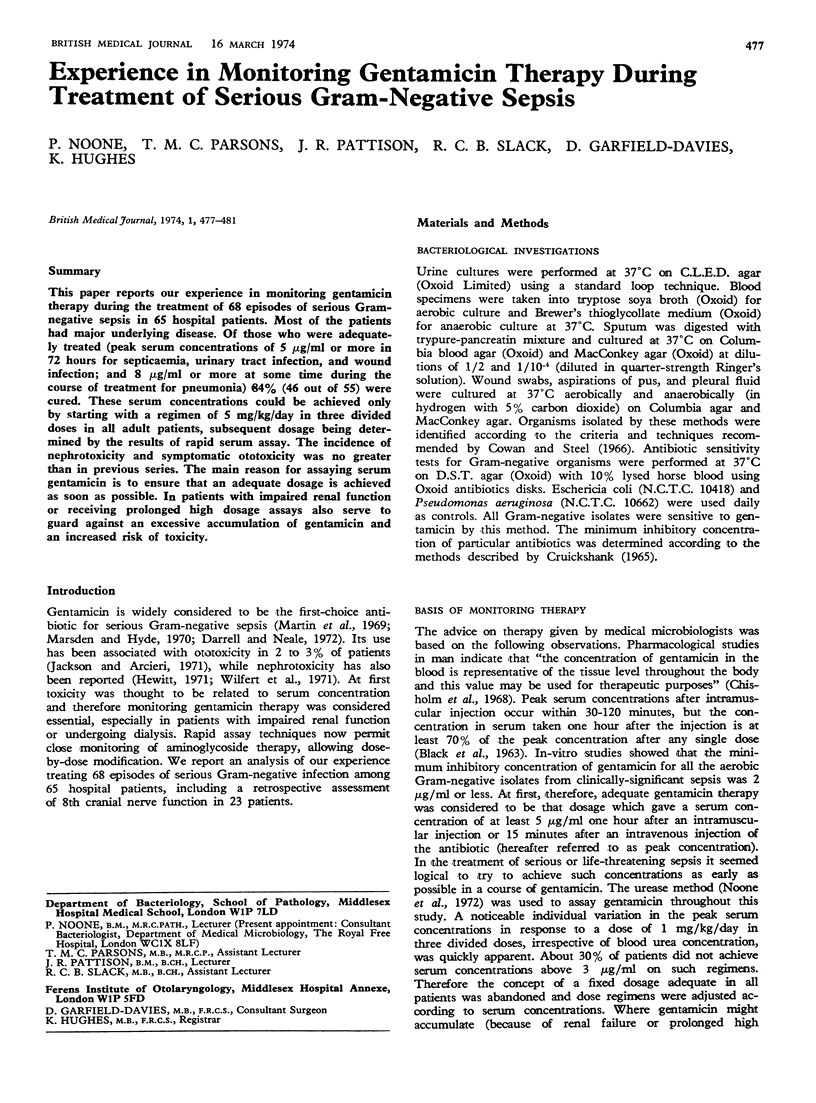
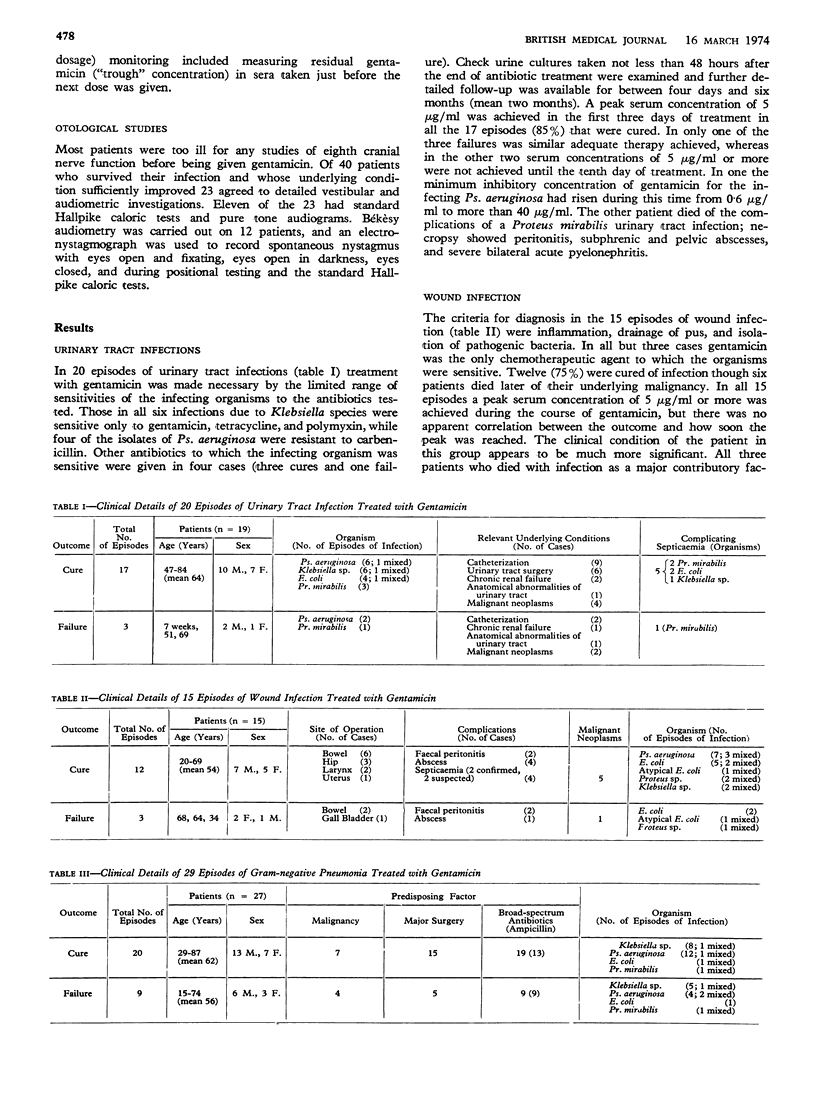
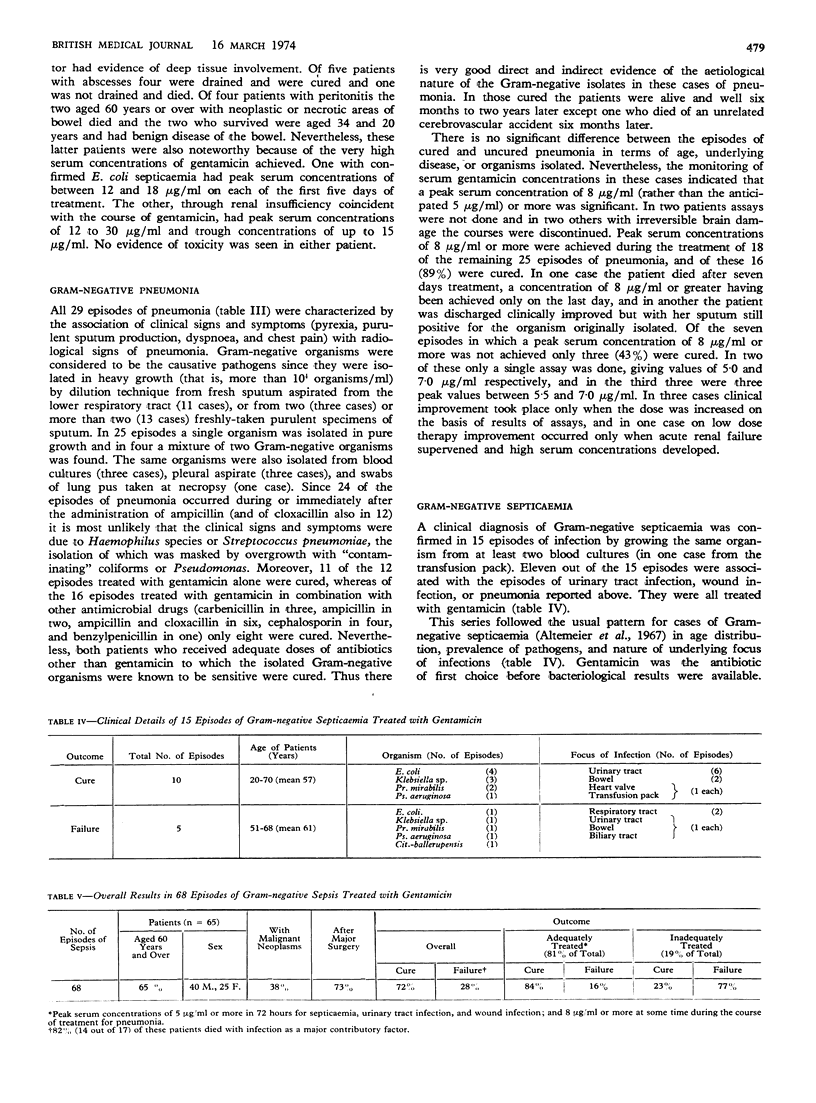
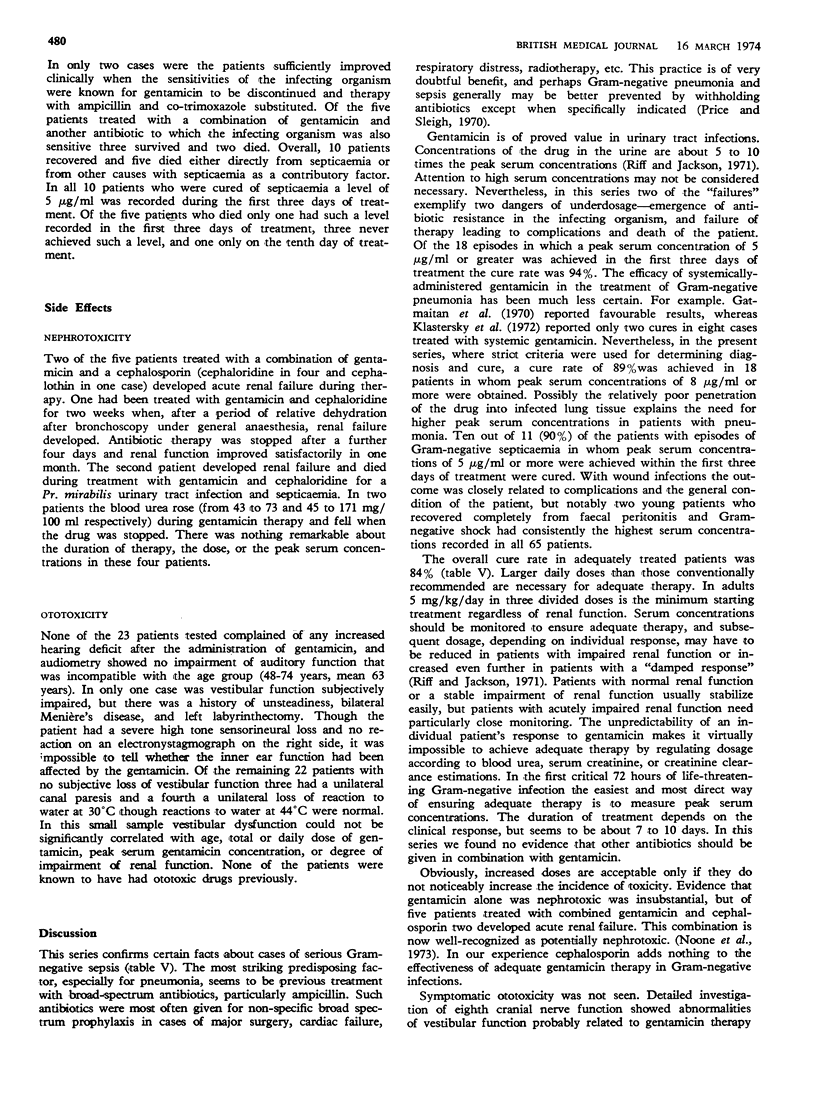
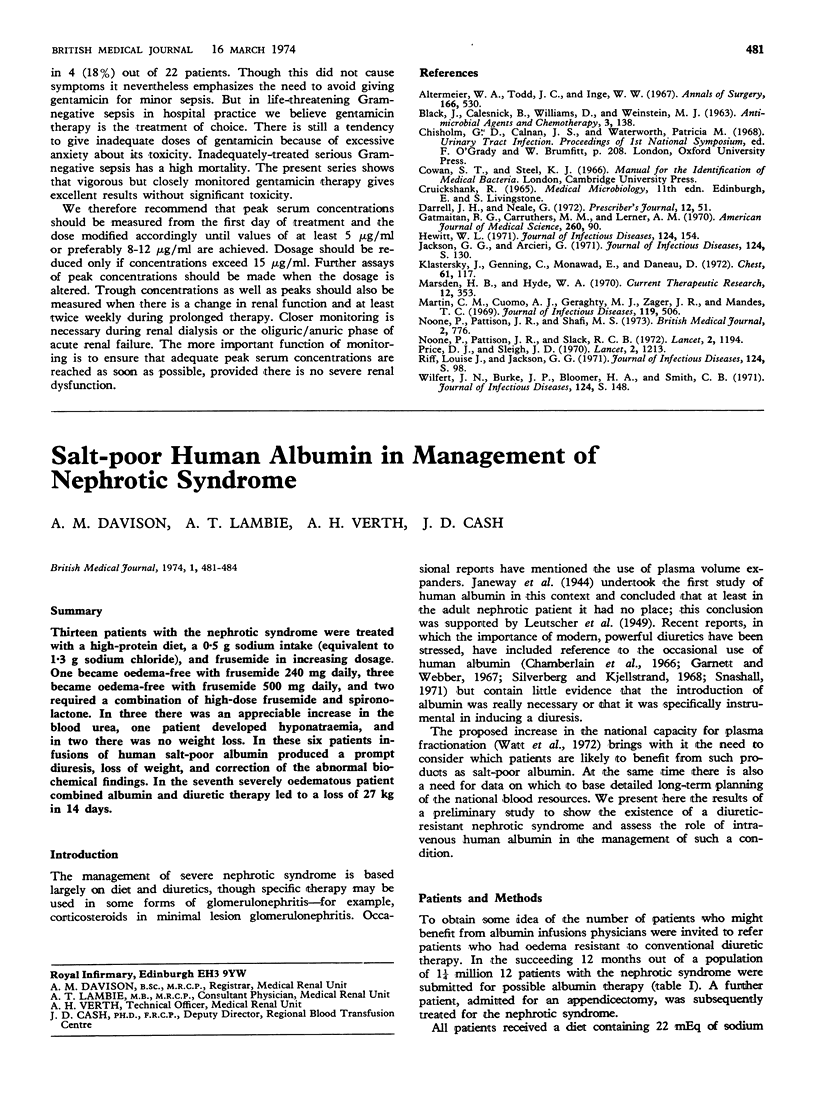
Selected References
These references are in PubMed. This may not be the complete list of references from this article.
- Altemeier W. A., Todd J. C., Inge W. W. Gram-negative septicemia: a growing threat. Ann Surg. 1967 Oct;166(4):530–542. doi: 10.1097/00000658-196710000-00003. [DOI] [PMC free article] [PubMed] [Google Scholar]
- BLACK J., CALESNICK B., WILLIAMS D., WEINSTEIN M. J. PHARMACOLOGY OF GENTAMICIN, A NEW BROAD-SPECTRUM ANTIBIOTIC. Antimicrob Agents Chemother (Bethesda) 1963;161:138–147. [PubMed] [Google Scholar]
- Klastersky J., Geuning C., Mouawad E., Daneau D. Endotracheal gentamicin in bronchial infections in patients with tracheostomy. Chest. 1972 Feb;61(2):117–120. doi: 10.1378/chest.61.2.117. [DOI] [PubMed] [Google Scholar]
- Marsden H. B., Hyde W. A. Gentamicin in childhood infections. Curr Ther Res Clin Exp. 1970 Jun;12(6):353–362. [PubMed] [Google Scholar]
- Martin C. M., Cuomo A. J., Geraghty M. J., Zager J. R., Mandes T. C. Gram-negative rod bacteremia. J Infect Dis. 1969 Apr-May;119(4):506–517. doi: 10.1093/infdis/119.4-5.506. [DOI] [PubMed] [Google Scholar]
- Noone P., Pattison J. R., Slack R. C. Rapid assay of gentamicin. Lancet. 1972 Dec 2;2(7788):1194–1195. doi: 10.1016/s0140-6736(72)92612-8. [DOI] [PubMed] [Google Scholar]
- Price D. J., Sleigh J. D. Control of infection due to Klebsiella aerogenes in a neurosurgical unit by withdrawal of all antibiotics. Lancet. 1970 Dec 12;2(7685):1213–1215. doi: 10.1016/s0140-6736(70)92179-3. [DOI] [PubMed] [Google Scholar]


